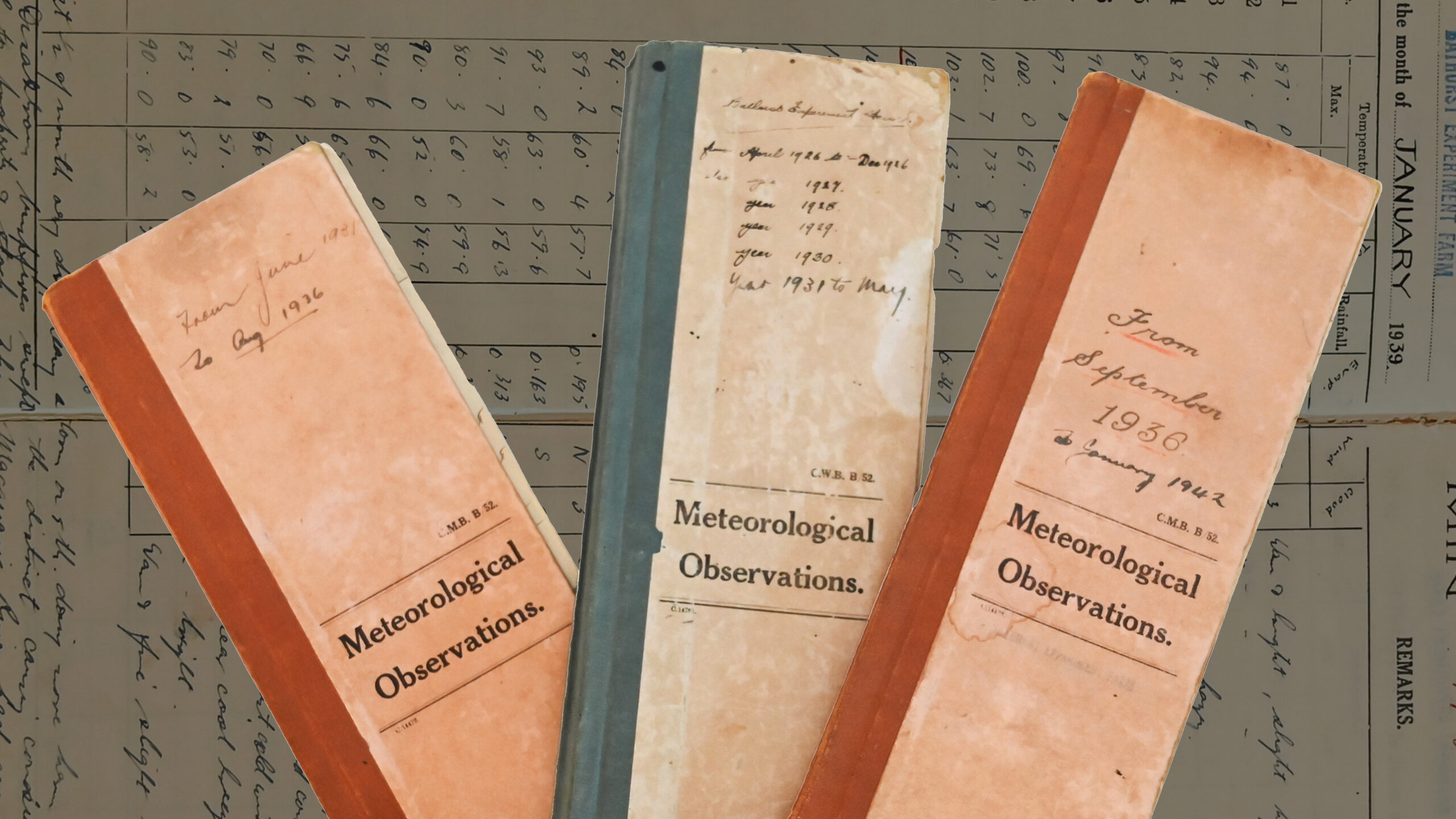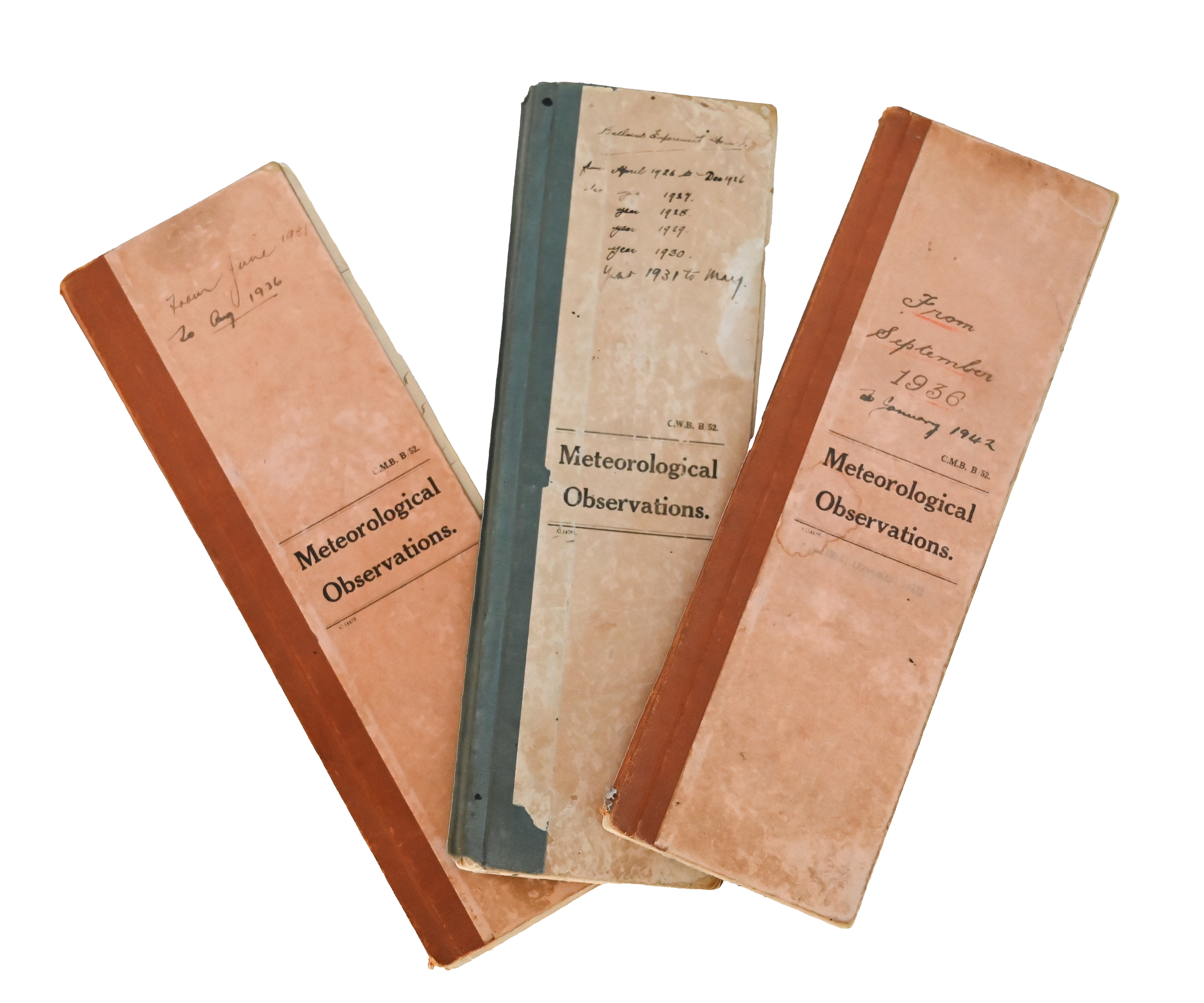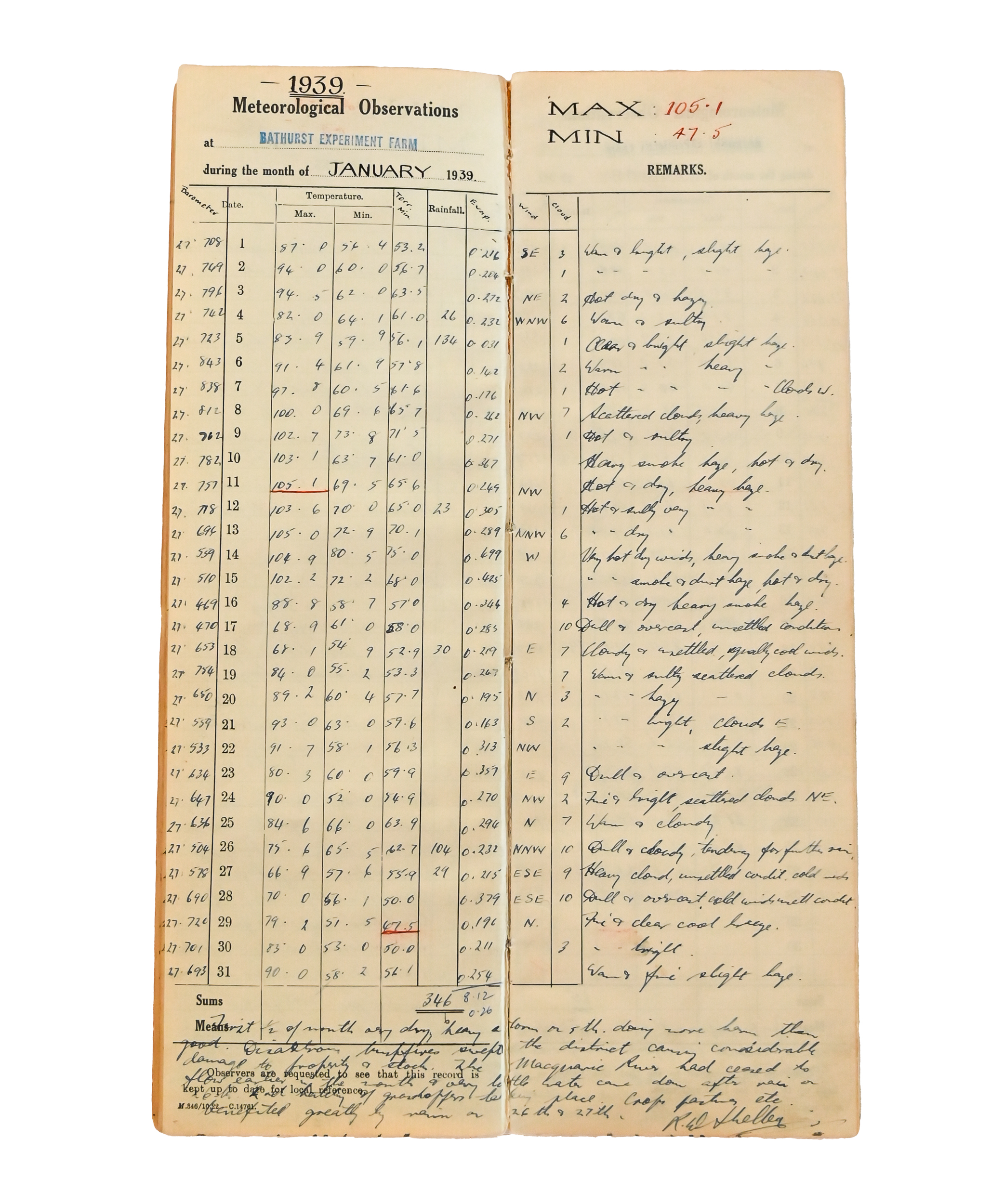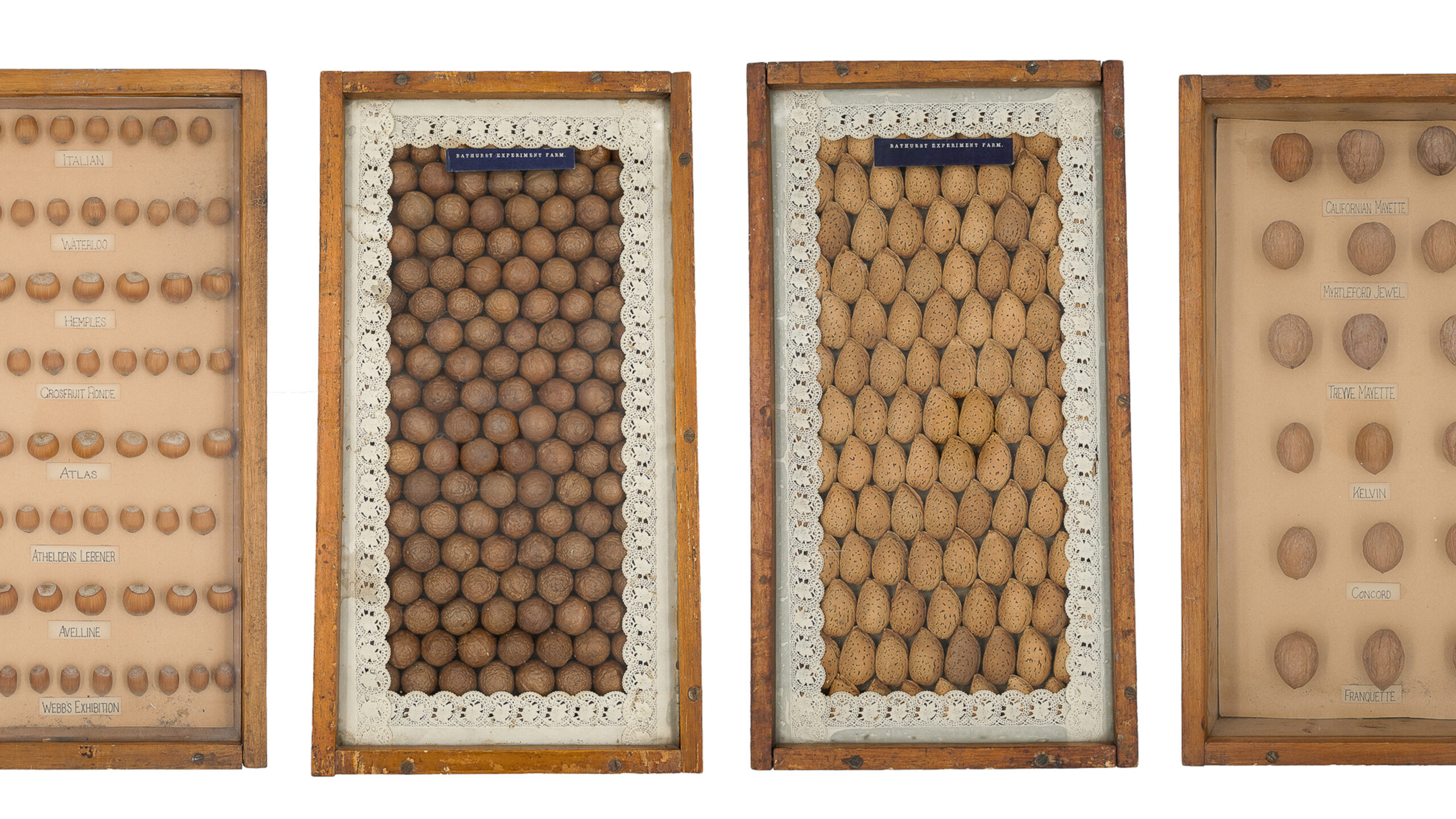A Wealth of Weather
Decades of Bathurst's Meteorological Records
Throughout the month of January 1939, the weather in Bathurst vacillated from a daytime high of 40.6°C on the 11th to a nighttime low of 8.6°C on the 29th. Smoke haze filled the sky, rain was only recorded on six days, and the Macquarie River ceased flowing. This is only part of the information that can be gleaned from the detailed meteorological records kept at the Bathurst Experiment Farm.
These records span a fifty year period and the level of detail for each day was a significant input into all areas of research conducted at the Farm. For example, how did the heatwave in January 1939 affect the stock, grain crops, various vegetables grown and the orchard? And how did this experience compare to the growth rate of crops and eventual harvest achieved in years with a cooler and/or wetter January?
The meteorological observations station was located in the Farm’s orchard and the records were especially valuable for the orchard due to the long-term nature of fruit-growing research. Propagation, blossom, fruit set, and cropping all depend on favourable weather conditions. The availability of long-run weather observations enabled researchers at the Farm to determine the most suitable time to plant and graft fruit trees and when the threat of frost was greatest.
The weather observations were not just of value to researchers and farmers. The residents of Bathurst and district benefited as daily observations were shared through the press and monthly reports were forwarded to the Commonwealth Meteorological Bureau and contributed to the current Bureau of Meteorology’s forecasting model. This comprehensive archive of weather observations, has contributed to agricultural research in the past and will continue doing so far into the future. A result unlikely to have been foreseen when the first observations were recorded in 1908.






